|
home | what's new | other sites | contact | about |
||
|
Word Gems exploring self-realization, sacred personhood, and full humanity
Editor’s collection of notes: Pre-Algebra Place Value
return to "mathematics:notes" main-page
from https://www.splashlearn.com/math-vocabulary/place-value/place-value
What is Place Value?In math, every digit in a number has a place value. Place value can be defined as the value represented by a digit in a number on the basis of its position in the number. For example, the place value of 7 in 3,743 is 7 hundred or 700. However, the place value of 7 in 7,432 is 7 thousand or 7,000. Here, we can see that even though the digits are the same in both numbers, their place value changes with the change in its position. Place Value ChartPlace Value Chart is a very useful table format that helps us in finding the place value of each digit based on its position in a number. The place value of a digit increases by ten times as we move left on the place value chart and decreases by ten times as we move right. 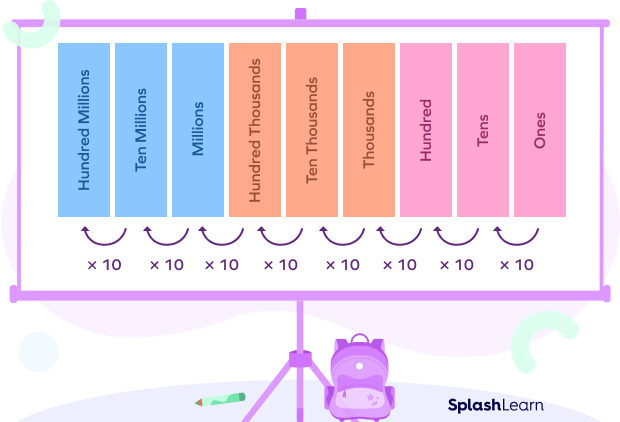
Here’s an example of how drawing the place value chart can help in finding the place value of a number. 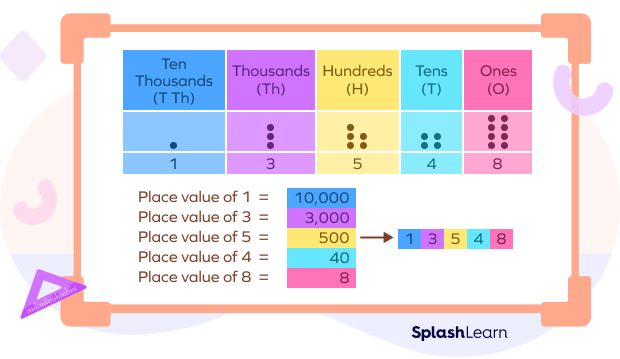
In the number 13,548 1 is in the ten thousands place and has a place value of 10,000. 3 is in the thousands place and has a place value of 3,000. 5 is in the hundreds and has a place value of 500. 4 is in the tens place and has a place value of 40. 8 is in the ones place and has a place value of 8. Understanding the place value of digits in numbers helps comparing numbers. It also helps in writing numbers in their expanded form. For instance, the expanded form of the number above, 13,548 is 10,000 + 3,000 + 500 + 40 + 8. Place Value Using Base Ten Blocks
The place value of digits in numbers can also be represented using base-ten blocks and can help us write numbers in their expanded form. Before, using the base ten blocks to find the place value of each digit in a number, let us first understand what these blocks represent. 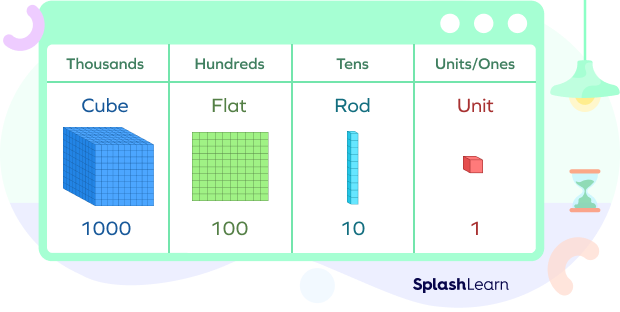
Here’s how the number 13,548 can be represented using base-ten blocks. 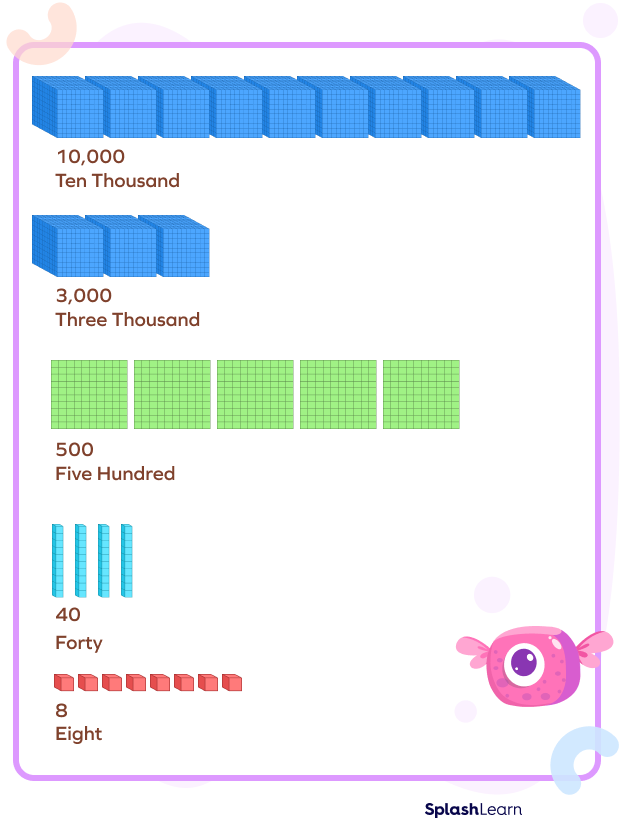
Decimal Place ValueDecimal numbers are fractions or mixed numbers with denominators of powers of ten. In a decimal number, the digits to the left of the decimal point represent a whole number. The digits to the right of the decimal represent the parts. As we move towards right after the decimal point, the place value of the digits becomes 10 times smaller. The first digit on the right of the decimal point means tenths i.e. 110. The next place becomes ten times smaller and is called the hundredths i.e. 1100 and so on. 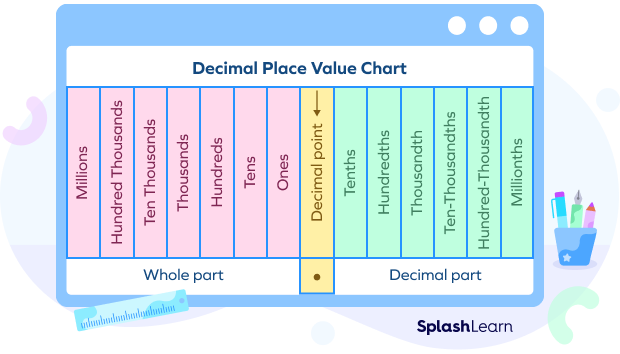
In 27.356, 27 is the whole number part, 2 is in tens place and its place value is 20,7 is in ones place, and its place value is 7. There are three digits to the right of the decimal point, 3 is in the tenths place, and its place value is 0.3 or 310 5 is in the hundredths place, and its place value is 0.05 or 5100 6 is in the thousandths place, and its place value is 0.006 or 61000 Place Value and Face ValuePlace value and face value are not the same. The face value of a digit is the value of the digit, whereas the place value of a digit is its place in the number. In simple words, the face value tells the actual value of the digit, whereas the place value tells the value of the digit based on its position. Hence, the face value of the digit never changes irrespective of it’s position in the number. Whereas, the place value of the digit changes with the change in the position. For instance, the face value of 2 in both the numbers 283 and 823 is 2. Whereas, the place value of 2 is 200 in 283 and 20 in 823.
|
||
|
|